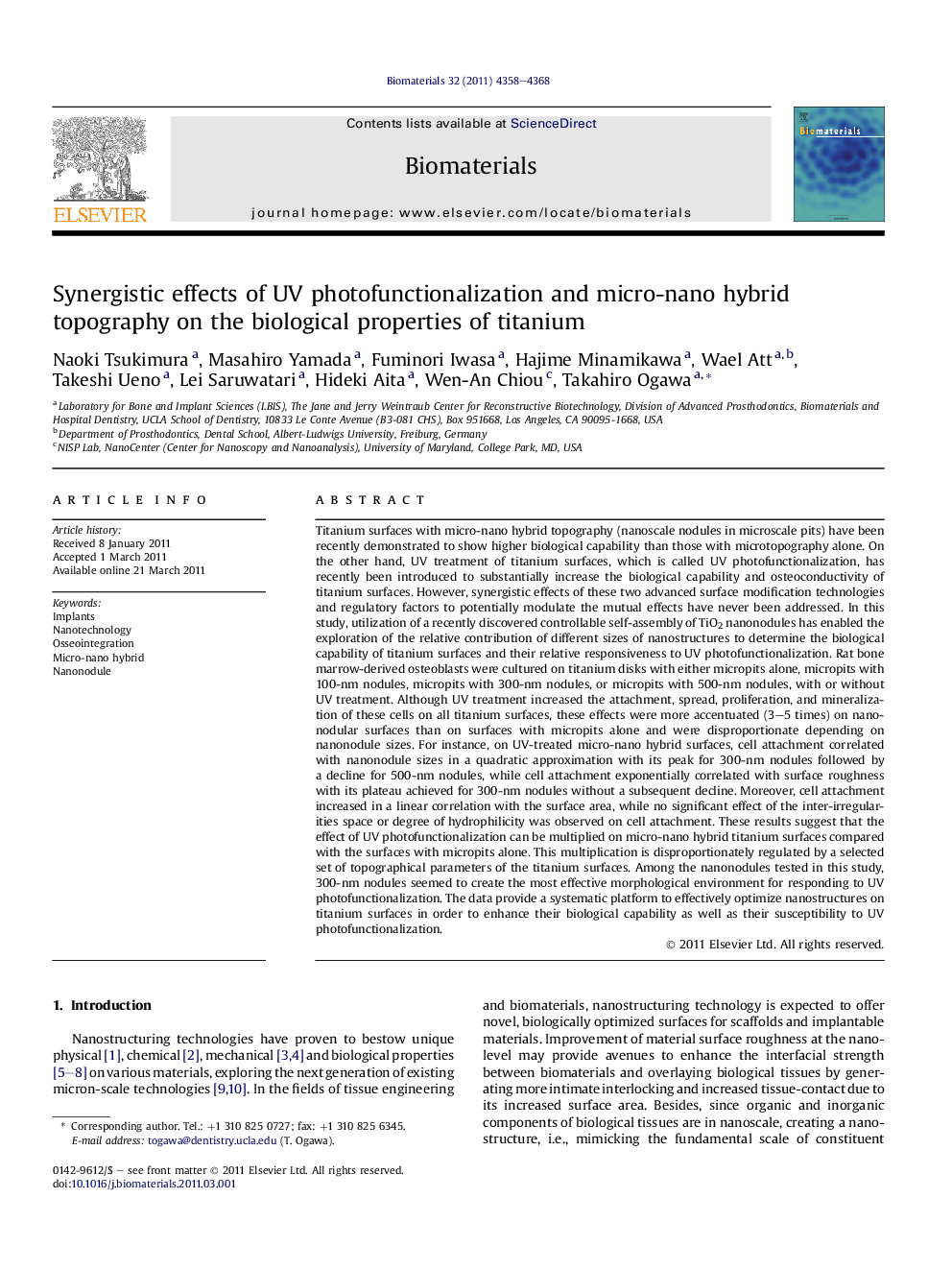| کد مقاله | کد نشریه | سال انتشار | مقاله انگلیسی | نسخه تمام متن |
|---|---|---|---|---|
| 7811 | 565 | 2011 | 11 صفحه PDF | دانلود رایگان |

Titanium surfaces with micro-nano hybrid topography (nanoscale nodules in microscale pits) have been recently demonstrated to show higher biological capability than those with microtopography alone. On the other hand, UV treatment of titanium surfaces, which is called UV photofunctionalization, has recently been introduced to substantially increase the biological capability and osteoconductivity of titanium surfaces. However, synergistic effects of these two advanced surface modification technologies and regulatory factors to potentially modulate the mutual effects have never been addressed. In this study, utilization of a recently discovered controllable self-assembly of TiO2 nanonodules has enabled the exploration of the relative contribution of different sizes of nanostructures to determine the biological capability of titanium surfaces and their relative responsiveness to UV photofunctionalization. Rat bone marrow-derived osteoblasts were cultured on titanium disks with either micropits alone, micropits with 100-nm nodules, micropits with 300-nm nodules, or micropits with 500-nm nodules, with or without UV treatment. Although UV treatment increased the attachment, spread, proliferation, and mineralization of these cells on all titanium surfaces, these effects were more accentuated (3–5 times) on nanonodular surfaces than on surfaces with micropits alone and were disproportionate depending on nanonodule sizes. For instance, on UV-treated micro-nano hybrid surfaces, cell attachment correlated with nanonodule sizes in a quadratic approximation with its peak for 300-nm nodules followed by a decline for 500-nm nodules, while cell attachment exponentially correlated with surface roughness with its plateau achieved for 300-nm nodules without a subsequent decline. Moreover, cell attachment increased in a linear correlation with the surface area, while no significant effect of the inter-irregularities space or degree of hydrophilicity was observed on cell attachment. These results suggest that the effect of UV photofunctionalization can be multiplied on micro-nano hybrid titanium surfaces compared with the surfaces with micropits alone. This multiplication is disproportionately regulated by a selected set of topographical parameters of the titanium surfaces. Among the nanonodules tested in this study, 300-nm nodules seemed to create the most effective morphological environment for responding to UV photofunctionalization. The data provide a systematic platform to effectively optimize nanostructures on titanium surfaces in order to enhance their biological capability as well as their susceptibility to UV photofunctionalization.
Journal: Biomaterials - Volume 32, Issue 19, July 2011, Pages 4358–4368